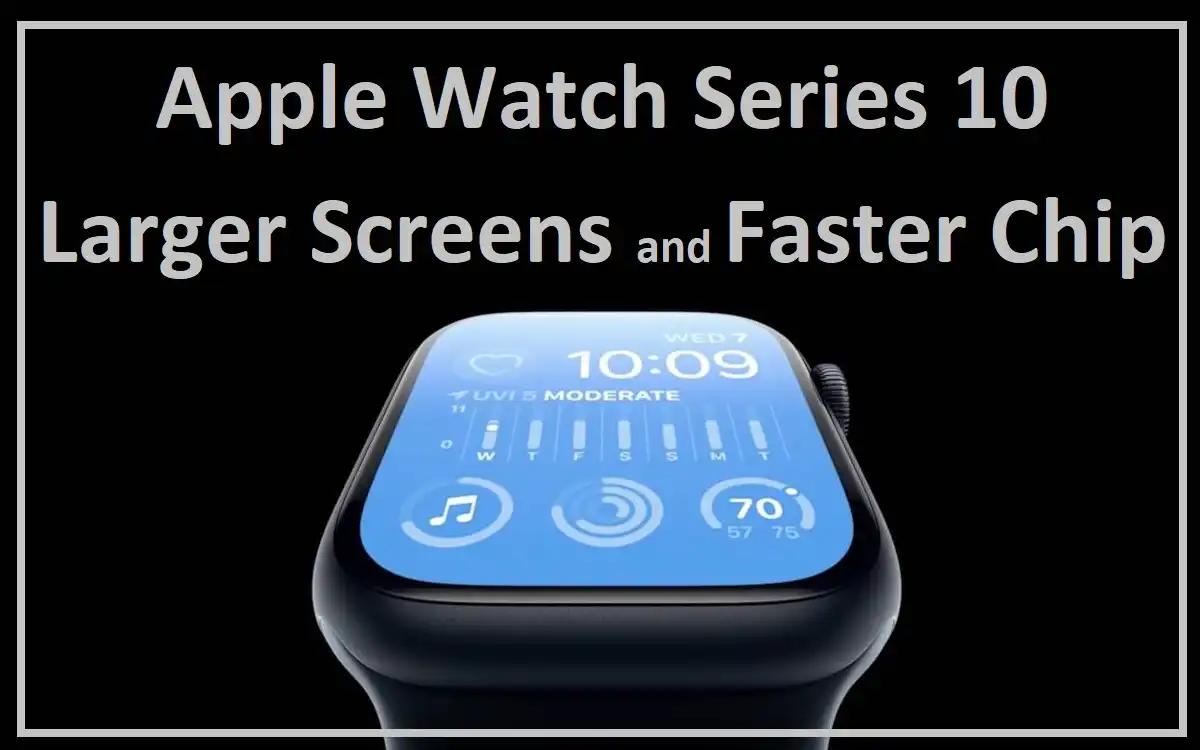Introduction
The highly anticipated Apple Watch Series 10 is on the horizon, promising exciting upgrades in display size and processing power. However, Apple’s ambitious plans for new health monitoring features have hit some unexpected roadblocks. This article delves into the upcoming enhancements, challenges, and potential future developments for Apple’s popular smartwatch line.
Recent Released: What Is iPadOS 18 Tab Bar Apps And How To Use?
Display and Design Enhancements
Larger Screens
The Apple Watch Series 10, internally known by the codenames N217 and N218, is set to feature notably larger displays. The larger model will boast a 2-inch screen, surpassing even the Apple Watch Ultra’s 1.93-inch display. This increase in screen real estate promises enhanced readability and user interaction.
Slimmer Profile Despite the Larger Screens
Apple has managed to make the Series 10 thinner than its predecessors. This achievement in miniaturization demonstrates Apple’s ongoing commitment to refining the watch’s form factor.
Familiar Design Language
While the Series 10 introduces significant internal upgrades, the overall design remains largely consistent with previous models. This decision maintains continuity for existing users and ensures compatibility with current accessories.
Performance Boost
More Powerful Processor
Both the Apple Watch Series 10 and the forthcoming Apple Watch Ultra 3 will feature a more robust processor. This upgrade lays the groundwork for potential AI-driven features in future iterations.
AI Capabilities: Present and Future
Although the new processor opens doors for AI enhancements, Apple currently has no plans to bring its full “Apple Intelligence” AI suite to the Apple Watch. This decision likely stems from power consumption and form factor constraints.
Health Monitor Challenges
Blood Pressure Monitor Setbacks
One of the most anticipated health features for the Series 10 was blood pressure monitoring. However, Apple has encountered significant reliability issues during testing. As a result, the feature may be limited to showing trends rather than providing precise measurements.
Sleep Apnea Detection Complications
Apple’s plans for sleep apnea detection have been hampered by an ongoing legal dispute. The feature relies on blood oxygen monitoring, which is currently restricted on Apple Watches sold in the United States due to patent issues.
Glucose Monitor
A Long-Term Goal Despite setbacks in other areas, Apple continues to explore glucose monitoring capabilities. This feature has been in development for nearly a decade, highlighting the complexity of integrating advanced health monitoring into a wearable device.
Legal and Regulatory Hurdles
Blood Oxygen Monitor Restrictions
The current legal situation preventing blood oxygen measurement in US-sold Apple Watches poses a significant challenge. Apple may need to delay the sleep apnea detection feature or develop alternative methods that don’t rely on blood oxygen data.
FDA Approval Considerations
As Apple pushes into more advanced health monitoring territory, obtaining FDA approval becomes increasingly crucial. The challenges faced with blood pressure monitoring underscore the rigorous standards required for medical-grade features in consumer devices.
Future Prospects and Workarounds
Potential Feature Delays
Given the challenges encountered, Apple may need to postpone the introduction of certain health features. This could impact the overall value proposition of the Series 10 for health-conscious consumers.
Alternative Approaches
Apple’s engineering team is likely exploring workarounds and alternative methods to deliver promised health features. This may involve developing new sensors or refining existing technologies to meet accuracy and reliability standards.
Focus on Software Enhancements
While hardware-based health features face hurdles, Apple could emphasize software improvements and AI-driven insights to enhance the watch’s health and fitness capabilities.
Comparative Analysis: Apple Watch Series 10 vs. Previous Models
To better understand the improvements and challenges of the Apple Watch Series 10, let’s compare it to its predecessors:
| Feature | Series 8 | Series 9 | Series 10 (Expected) |
| Display Size (larger model) | 1.9 inches | 1.9 inches | 2 inches |
| Processor | S8 chip | S9 chip | New, faster chip |
| Thickness | 10.7mm | 10.7mm | Thinner (exact spec TBA) |
| Blood Oxygen Monitoring | Yes | Yes | Uncertain (legal issues) |
| Blood Pressure Monitoring | No | No | Possible (trend-based) |
| Sleep Apnea Detection | No | No | Uncertain (legal issues) |
| Glucose Monitoring | No | No | In development (not confirmed) |
Conclusion
The Apple Watch Series 10 represents a significant step forward in terms of display technology and processing power. The larger screens and slimmer profile demonstrate Apple’s commitment to evolving the product’s design while maintaining its iconic look.
However, the challenges faced in implementing advanced health monitoring features highlight the complexities of integrating medical-grade capabilities into consumer wearables. Apple’s struggles with blood pressure monitoring accuracy and legal hurdles surrounding blood oxygen measurement underscore the rigorous standards required for health-related technologies.
Despite these setbacks, Apple’s continued investment in long-term projects like glucose monitoring shows the company’s dedication to pushing the boundaries of wearable health technology. As the Apple Watch evolves, it’s clear that balancing innovation with reliability and regulatory compliance will be crucial.
For consumers eagerly awaiting the Series 10, the larger display and improved performance offer compelling reasons to upgrade. However, those primarily interested in cutting-edge health features may need to temper their expectations or wait for future iterations as Apple works to overcome current challenges.
As the smartwatch market continues to mature, Apple’s ability to navigate these obstacles and deliver on its health monitoring promises will play a significant role in maintaining its leadership position. The coming months will be crucial as Apple finalizes the Series 10’s feature set and prepares for its launch, potentially reshaping the landscape of wearable technology once again.


